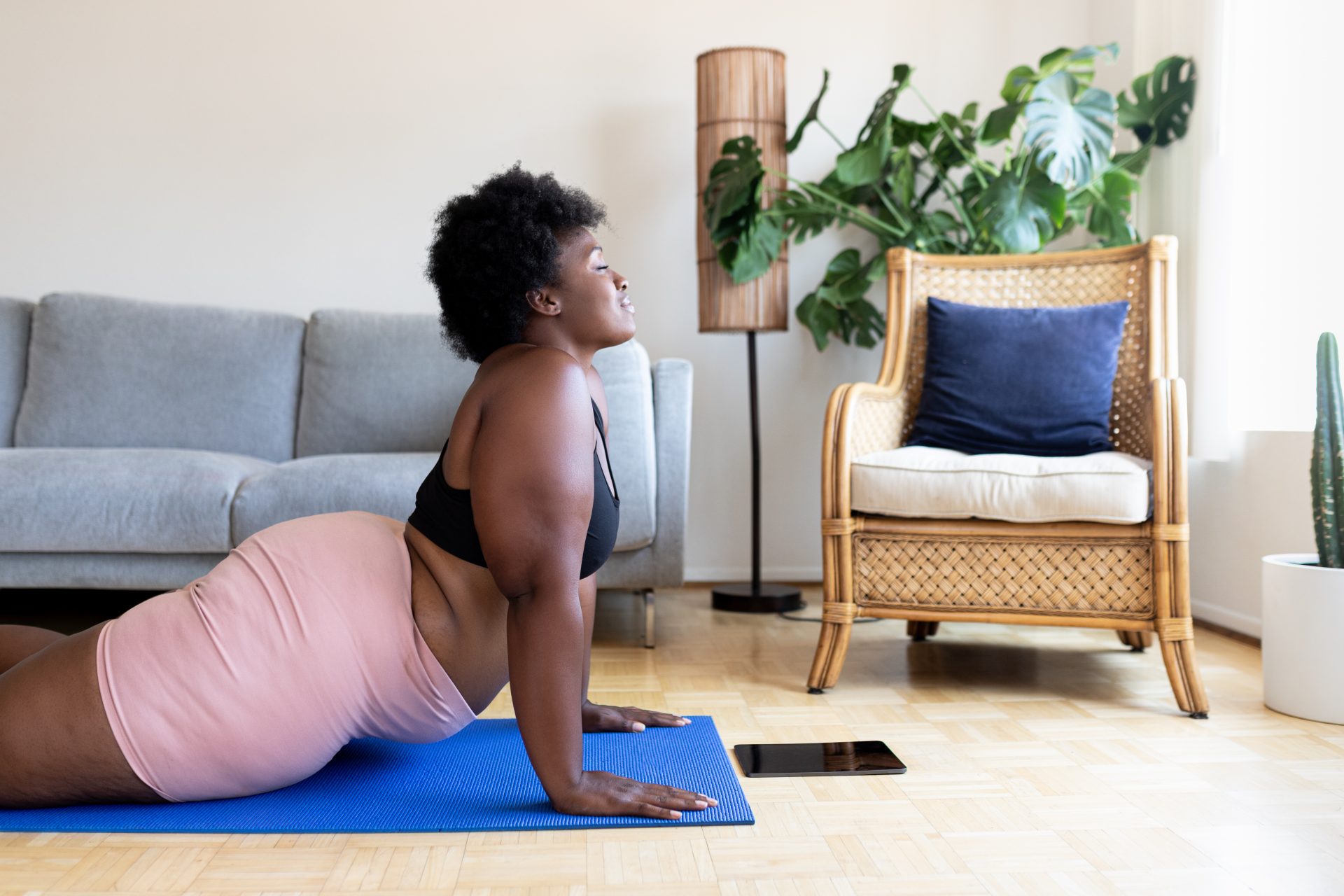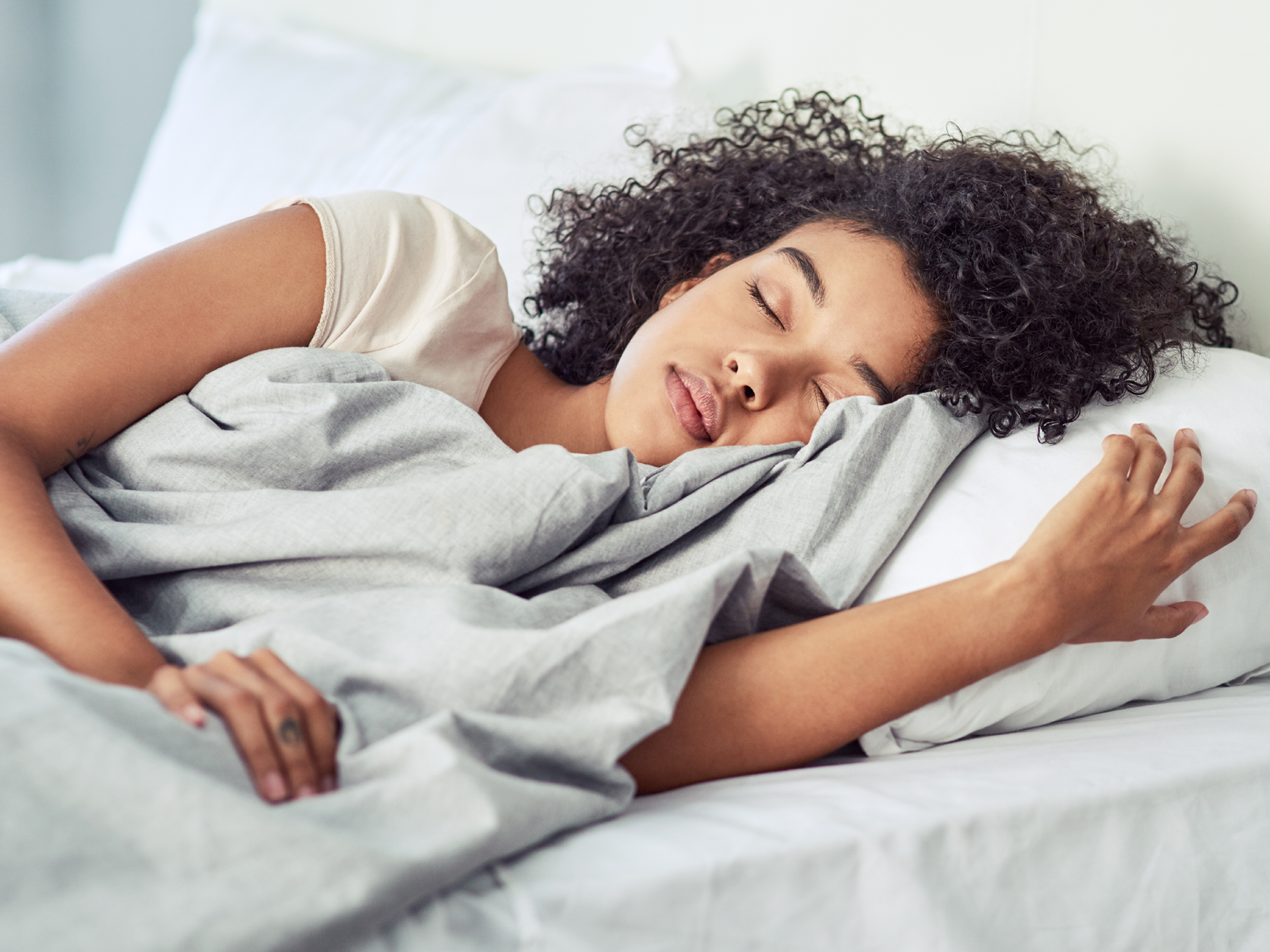Generalised Anxiety Disorder is different for everyone but one thing that tends to be universal in its management is the encouragement to move. Writer Beth Ashley explores how to find the best exercise to suit your mind and body, and how to forge a safe routine that’ll help and not hinder your progress.
The NHS recommends exercising to manage anxiety, as do many healthcare professionals. The benefits are plentiful: reduced muscle tension, improved self-esteem, increased cognitive function. However, anxiety disorders are individualistic and complex and it’s hard to say how any person with anxiety will react to certain types of exercise. There’s also little available information about how to safely exercise with anxiety.
I wish I’d known more about moving with a Generalised Anxiety Disorder when I started exercising for the first time last year. In a bid to take my fitness more seriously, I did my first HIIT workout and was blown away by the pay-off; I felt like my body and mind were shining. After the second class, however, I felt significantly less buoyed up. As my heart rate quickened and my body began to sweat, my mind went into overdrive. I couldn’t tell if I was panicking or if I was just more unfit than I’d anticipated. Putting the initial benefits down to beginner’s luck, I persisted with the HIIT training – and so did my anxiety symptoms. For the 8.2 million Brits like me who live with chronic anxiety, those sensations of anxiety can feel similar to terror.
You may also like
Anxiety tips: 5 simple and effective ways to help stem anxious thoughts
WHY DO ANXIETY ATTACKS HAPPEN WITH HIIT?
Dr Sandra Walker, a psychiatrist and director of SanityCo (which offers mental health training for those working with young people) in explains that it all boils down to that pesky (but necessary) stress hormone, cortisol. Produced by the adrenal glands, cortisol is responsible for our flight or fight response – our own built-in survival system. A panic attack is essentially the result of a cortisol elevation, with all the symptoms of a panic attack – sweating, nausea, fast breathing, increased heart rate – being reinforced versions of how we would behave if we were under threat.
As Dr Walker describes, our cortisol levels rise when we exercise (we need that spike in stress to move) as well as when we panic, which explains why some of us experience a similar feeling when we’re moving as we do when we’re spiralling. “It makes sense that people with anxiety would struggle with high-intensity exercises, though (exercising) would still be beneficial in the long-term because cortisol levels drop right after exercise,” she says. If a person’s cortisol levels are high because they’re already anxious, high-intensity exercise is going to exacerbate that feeling of panic.

How to exercise with anxiety
1. CHANGE UP YOUR ROUTINE
Exercise and anxiety are both highly personal. Even without a mental health condition, finding the right approach for you can be a challenge that involves trial and error – working out in different ways until you find what’s suitable. For some people with anxiety, opting for a low-medium intensity exercise (at least while you get used to exercising) such as swimming, brisk walking or light jogging may be helpful.
Helen, 56, has had anxiety all her life and started exercising after the breakdown of her marriage when her self-esteem was at an all-time low. She began with home workouts and group HIIT workout classes but found them too stressful. Running ended up being the right exercise for Helen and her anxiety symptoms. “The first time, I went out to a quiet, deserted field and ran around it. Gradually, I started to go further and realised I was good at it. Sometimes, I run with a friend but mainly I like running solo in wooded areas, listening to my favourite music. When I run, I feel powerful and strong.”
It’s not just that running can release those feel-good endorphines; it often involves moving in nature – something that Dr Walker strongly advises as a way of relieving stress.
2. OFFSET HIIT WITH LOW IMPACT MOVEMENT
Sophie, 22, manages her anxiety by slotting in a short bout of low-intensity exercise before the main workout, such as yoga. “For me, this helps me to find relaxation beforehand, so I enter the main workout with a calm mind and I’m not worked up about doing the high-intensity part.”
Hannah Lewin, a personal trainer specialising in supporting clients with a range of mental health needs, weighs in: “The thinking behind this approach is to allow some time for the participant to calm the mind and relax the body before they engage in higher intensity work, where the physical symptoms of anxiety may present as the side effects of exercise.”
You may also like
“The surprisingly simple way I learned to live with my anxiety”
3. TRY NEW THINGS
Consistency might be comforting for some people but Hannah notes that while exercising consistently can certainly help to manage anxiety symptoms, results will vary from person to person. For others, breaking the monotony and trying new things can help curb anxiety symptoms and help you focus on the actual exercise. This might mean changing the location of exercise, changing up your workout playlist or bringing a friend along for the ride (when you can!). “I would encourage experimenting with various tactics to find what works for you – it may take a few attempts so patience will be key,” says Hannah.
Dr Walker adds that the way we handle anxiety outside of exercise can also help us within it. For example, if you like to be around your friends and family to reduce stress, getting one of them involved in whatever exercise you’re doing may help reduce the risk of anxiety. “Pets can also make great companions for exercise, so if you have a pet who helps you to feel relaxed, involve them.”
4. GRADUALLY BUILD UP INTENSITY
While high-intensity exercise can still be beneficial for people with anxiety as cortisol levels decrease immediately after the exercise has finished, Dr Walker still advises sticking to mostly low-to-moderate exercise for people struggling with anxiety. If you want to increase the intensity, you should do so gradually. She recommends exercising during short windows of time. “Rather than exercising for half an hour straight, 15 minutes in the morning and 15 minutes at night may be more effective for people with anxiety,” she tells Stylist, while warning that what we eat also can play an important role in staying calm. Those of us with anxiety should steer clear of consuming too much sugar or caffeine as “stimulant foods are not friends to those with anxiety.”
And what we do away from exercise is equally as important. Getting enough good sleep is vital for ensuring that our cortisol levels are stable. According to Dr Walker, our bodies make necessary adjustments to our cortisol production during our sleep, so good sleep will result in lower levels by the time the morning comes. If we start our day at a low level, exercise is less likely to result in panic.

5. TAKE THE PRESSURE OFF
It’s important to remember that while movement tends to be great for all of our wellbeing, if you’re having a difficult day, you shouldn’t feel pressured into intense exercising. If you’ve moved at all, you’ve done some good for your body and your mind. That alone is an achievement.
Ultimately, the most important factor in developing a fitness routine for anxiety is staying in your lane. While it can be beneficial to take inspiration from others, don’t allow what other people are doing to leave you feeling insecure about your fitness. It’s integral to remember that everyone is just doing their best and will have developed approaches that work for them. What works best for someone else, may not work best for you.
6. SPEAK TO YOUR GP
If problems persist after making a few changes, it’s time to contact your GP to tell them about your concerns. Your GP will be able to assess your situation and help you to develop calming methods; they may even offer you medication for physical symptoms. It’s important to remember that your mental health is important and worth treating, and that most medications will not affect your performance. If you’re worried, visit the NHS website, an anxiety charity and contact your GP today.
If you, or someone you know, is struggling with their mental health, you can find support and resources on the mental health charity Mind’s website and NHS Every Mind Matters or access the NHS’ list of mental health helplines and organisations here.
If you are struggling with your mental health, you can also ask your GP for a referral to NHS Talking Therapies, or you can self-refer.
For confidential support, you can also call the Samaritans in the UK on 116 123 or email [email protected].
Check out more stretches and low impact moves in the SWTC How To library.
Images: Getty
Source: Read Full Article
